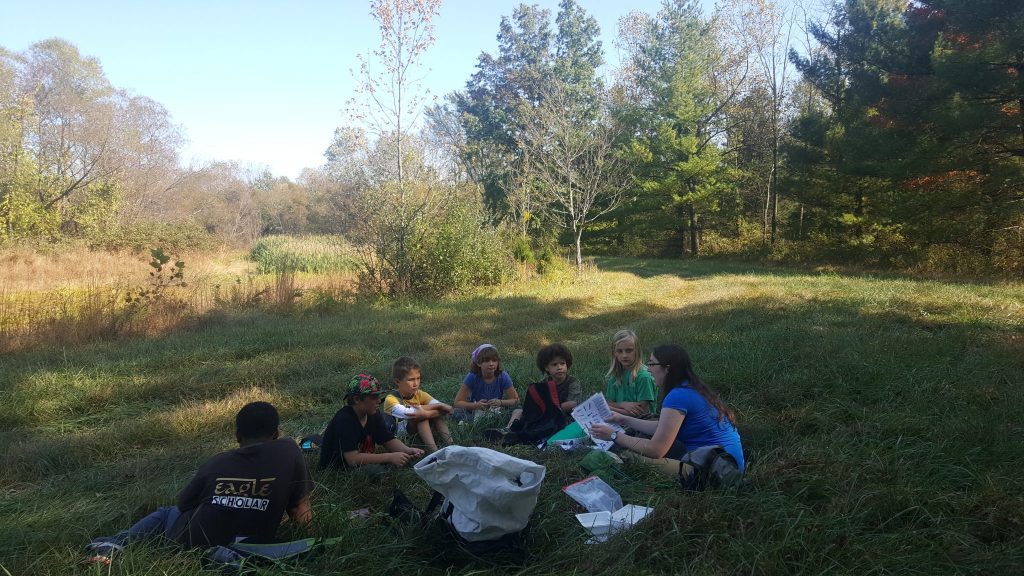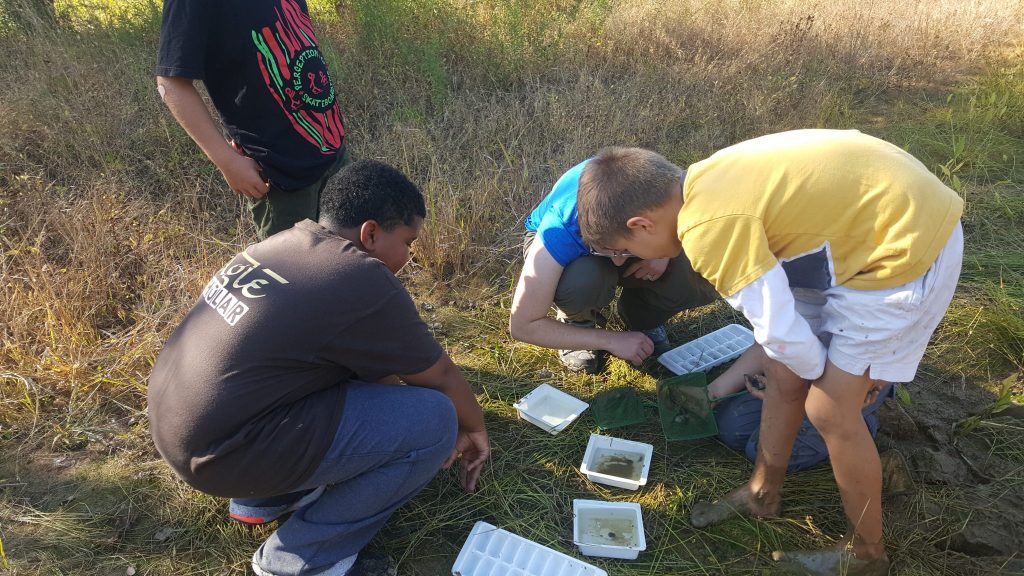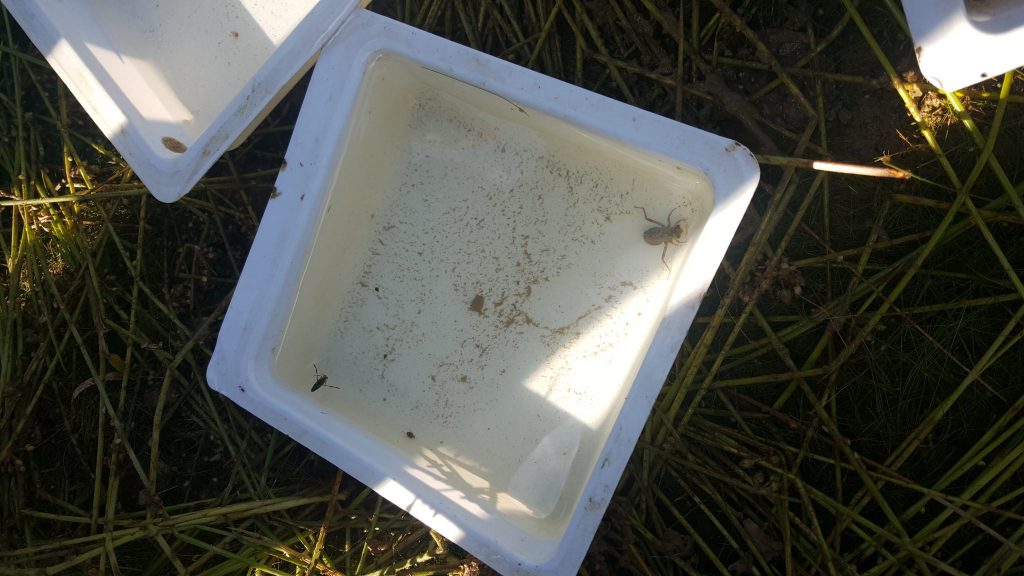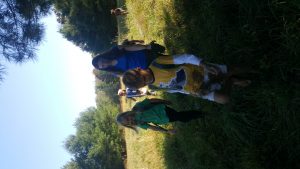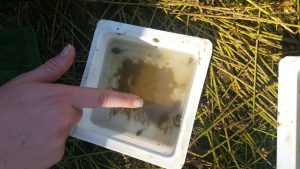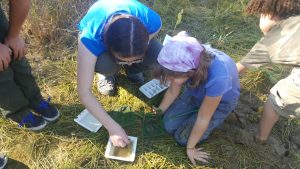Today we took an epic walk to the ponds in a far off land after starting with our daily check-in circle. It was a really hot day so a trip to the pond was very fitting! After walking through the forests and across the meadows, checking out some Monarch Butterflies enjoying the sunshine, we finally made it to the tree line. Before venturing onto a trail covered in fall colors, we found a very useful plant!
Yarrow is an herb that has bountiful uses and the entire plant can be used as well. You can chew on it to help with toothaches, it can be brewed in a tea to help reduce the symptoms of the common cold, it can help reduce rashes and irritations when applied to the skin in a poultice like paste and it can even help you sleep better! This is one of the most useful herbs out there and a good one to know about but be careful, it is in the carrot family along with plants such as poison hemlock and other very toxic plants, so use caution.
After examining the yarrow we passed through the forest and through a grove of pines to the pond. It was tranquil and beautiful and it was even playing host to a few ducks. Before we got our feet muddy we had a snack in the tall grass and learned more about what we would find under the water’s surface.
Macroinvertebrates are small animals that are missing a backbone. So some of the animals we were likely to see included snails, dragonfly nymphs, beetles, worms and even some vertebrates (with a spine) like tadpoles or maybe fish. Most of the animals we were hoping to find are insects (3 body parts and 6 legs). Have you ever seen a dragonfly before? Well, how about a baby dragonfly? They can spend years of their life in the water, eating and trying not to get eaten and surviving all the other hardships that an insect goes through, until they emerge as an adult dragonfly that only lives a few weeks to a month. Now that we knew what we were looking for it was time to get our nets in the muck and here is what we found!
We found snails, a variety of diving beetles, a backswimmer (seen below to the left. These guys can bite too!), a damselfly nymph (which is a lot like a dragonfly as an adult), tadpoles, and quite a few baby dragonflies! It’s important to remember we have a big impact on these tiny macroinvertebrates even if we never really see them. Without clean water most of them wouldn’t survive to adults. We can help keep our water clean a few ways: making sure we keep litter off the ground, picking up after our pets, trying to use less fertilizer on our lawns and keeping plants growing around our ponds. These tiny critters also have a long way to go from the stage they’re in now to adults. This transformation (imagine a frog going from tadpole to adult frog) is called metamorphosis, which is the process an animal goes through in stages where they look much different as an adult than they did as a baby. Check out some baby dragonflies, what do you think? (The dragonfly nymph, which is a baby dragonfly, is on the right and a back swimmer is on the left).
Today we got to explore a whole new world under the water’s surface, so just remember, the next time you go swimming in the creek or in a lake, you have some friends swimming with you! Don’t worry, these little creatures are all part of a greater world where without them nature wouldn’t look the same.
- Tadpoles
